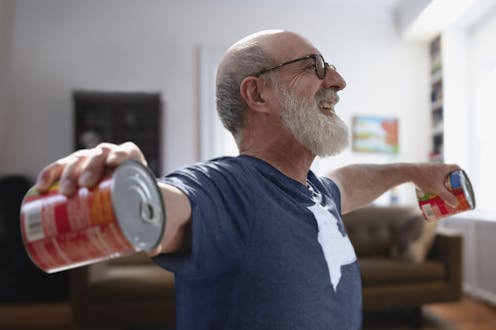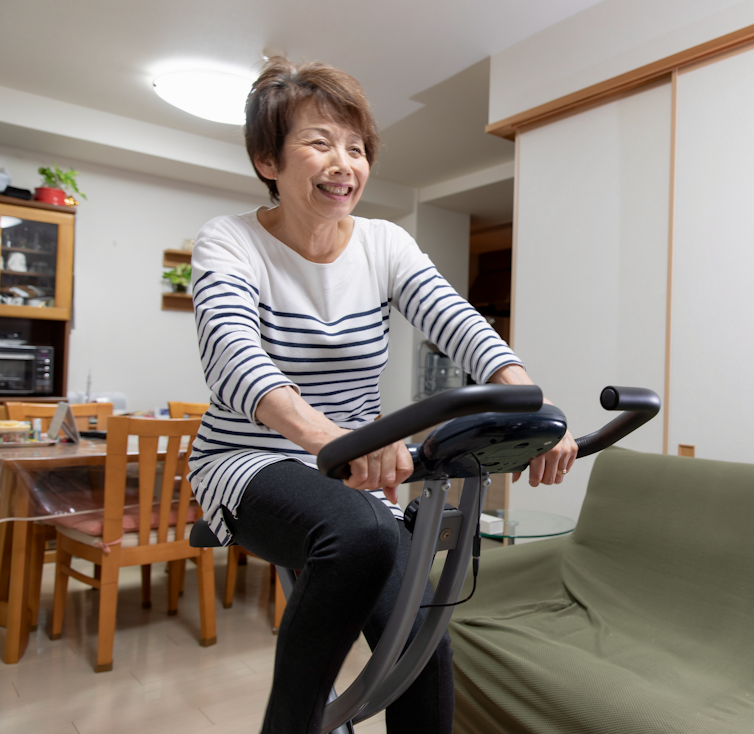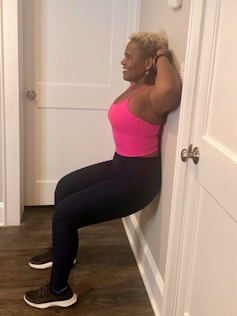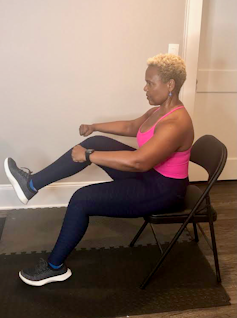These at-home exercises can help older people boost their immune system and overall health in the ag
Older adults, who are at a higher risk for COVID-19 complications, can strengthen their immune systems by exercising.

Older adults, especially those over 65, have five times the risk of hospitalization and 90 times the risk of death from COVID-19 compared with younger adults.
According to the U.S. Centers for Disease Control and Prevention, 78% of the more than 114,000 COVID-19 related deaths between May and August 2020 were people age 65 and older. Many of those individuals had compromised immune systems due, in part, to a variety of other health conditions including obesity, cardiovascular disease, diabetes, respiratory disease and hypertension. The CDC suggests these additional health problems could lead to increased severity of COVID-19.
The good news, however, is that regular exercise and cardiorespiratory fitness can significantly reduce the risk COVID-19 poses to older adults by improving overall health and boosting the immune system.

Now is not the time to stop moving
Staying active can be challenging, as many older adults are remaining at home most, if not all, of the time to avoid the novel coronavirus. As a result, the very changes in lifestyle that keep people safe from exposure can also result in their adopting sedentary habits – which leave people vulnerable to serious health consequences should they get COVID-19.
Exercise, especially aerobic exercise, which gets the heart pumping hard and improves cardiorespiratory fitness, has multiple health benefits, including reduced risk for stroke, heart attack, depression and age-related cognitive decline and Alzheimer’s disease.
The U.S. Department of Health and Human Services recommends that older adults get at least 150 minutes a week of moderate- to vigorous-intensity exercise. That means three 50-minute sessions each week, or a little over 20 minutes per day.
Firing up the immune system
Not only can exercise enhance overall health, it can also specifically improve immune system response, which is critical to surviving COVID-19.
As humans age, the immune system becomes progressively less effective at responding to new viruses because of an age-related weakening of the immune system, also known as “immunosenescence.”
The good news is that exercise improves the efficiency of the immune system in people of all ages. Every session of exercise mobilizes billions of immune cells throughout the body. The more immune cells circulate, the better they are at spotting and attacking potential pathogens.
Although there is no data yet on how exercise and cardiorespiratory fitness can reduce risk of hospitalization or death from COVID-19, previous studies show that regular exercise improves the immune response to other viral infections. Regular exercise has also been shown to lower the risk of death from viral and respiratory illnesses. Furthermore, increased physical activity is known to improve and prolong the immune response from the flu shot.
Working out at home
How can older adults safely exercise and keep aerobically fit while stuck mostly at home without access to a gym? At the Aging & Brain Health Alliance at Rutgers University-Newark, we have been offering virtual exercise classes, by video conference or phone, for seniors using materials they can easily find around the home.
Here are a few suggested exercises from our fitness classes you can do on your own safely at home.
One of the best exercises to get you started on your fitness journey is to walk the floors of your home. Whether in a house or an apartment, take time every hour to get up and just walk. Set aside five to 10 minutes with the goal of increasing your daily step count and improving your overall cardiorespiratory health. Challenge a family member to join you and make it fun.

You should also take advantage of your walls. Wall sits are an easy way to engage your muscles and work your body. Simply stand with your back against a wall; step your feet two feet away from the wall and open your legs hip-distance apart. While keeping your shoulders against the wall, slowly and carefully lower your body until you are sitting in an imaginary chair.
Remember to keep breathing, inhaling through your nose and exhaling from your mouth, and you will begin to feel the burn in your leg muscles. Try coming up and down five times if you feel safe and comfortable doing so. (For extra security, keep a chair or something else near by to hold on to if you lose your balance.)

Finally, use a chair. Sit at the edge of a solid chair focusing on maintaining good posture. Plant your feet hip-distance apart; take a big inhale and, on the exhale, slowly lift one knee toward your chest. This is a seated crunch and it will engage your deep core muscles. Complete five of these knee lifts on each side, making sure to do each knee lift on the exhalation.
[Deep knowledge, daily. Sign up for The Conversation’s newsletter.]
Exercise habits developed during this period of COVID-19 – and maintained after the threat has passed – will support your immune health for years to come.
Mark A. Gluck receives funding from the NIH’s National Institute on Aging (1R01AG053961, 2R56-AG045571), the New Jersey Department of Health’s Office of Minority and Multicultural Health, and the office of Rutgers University-Newark Chancellor Nancy Cantor.
Bernadette A. Fausto is supported by a post-doctoral diversity supplement from the NIH/NIA (3R01AG053961-03W1).
Lisa Charles does not work for, consult, own shares in or receive funding from any company or organization that would benefit from this article, and has disclosed no relevant affiliations beyond their academic appointment.
Read These Next
The ‘one chatbot per child’ model for AI in classrooms conflicts with what research shows: Learning
AI tutors are often held up as an ideal, but prioritizing individualized teaching can detract from the…
Christmas trees are more expensive than ever in Colorado — what gives?
Most Christmas trees are imported from other states, which drives up costs.
Getting peace right: Why justice needs to be baked into ceasefire agreements – including Ukraine’s
Just war theory, a centuries-old field of ethics, deals with how and when to start conflicts. It can…






